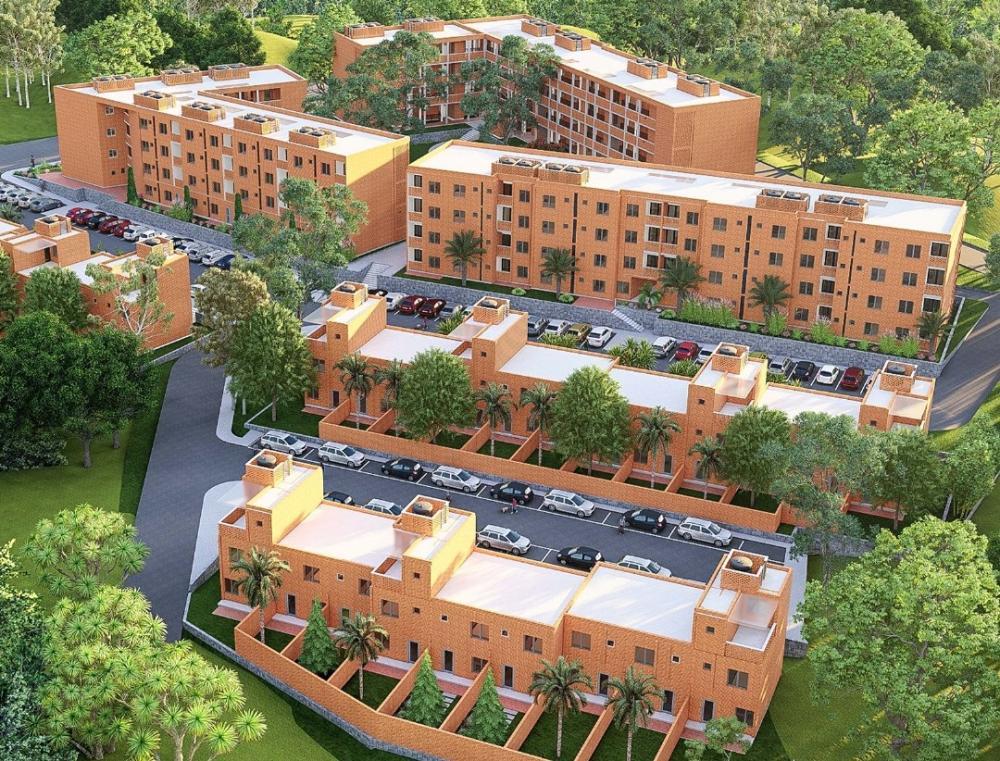Africa-Press – Rwanda. As Rwanda pushes toward a low-carbon, climate-resilient economy under Vision 2050 and the National Green Growth and Climate Resilience Strategy, the construction sector is under growing pressure to go green.
The government is encouraging developers to integrate eco-friendly designs that reduce energy use, conserve water, and improve residents’ well-being.
Last week, Fortis Green Housing, a Kigali-based American developer, unveiled a $25 million eco-estate in Masaka Sector, one of the latest projects aligning with Rwanda’s sustainability goals.
But what exactly makes a housing project green? Environmental experts and officials from the Rwanda Housing Authority (RHA) say a truly eco-friendly development must integrate features that promote efficiency, sustainability, and livability.
Energy efficiency
Energy efficiency is the foundation of green housing design. According to Yves Sangwa, CEO of the Rwanda Green Building Organisation (RWGBO), energy-saving systems are among the top requirements for a project to qualify as green.
“These include solar panels for electricity or water heating, energy-efficient LED lighting, and motion sensors that adjust lighting automatically when spaces are unoccupied,” he explained.
Solar-powered streetlights and smart building orientation that maximises daylight while minimising heat gain also play a key role. These features help lower electricity costs, reduce strain on the national grid, and cut carbon emissions.
Water efficiency
In the face of growing water scarcity, sustainable housing projects are designed to manage and reuse water responsibly. Sangwa noted that low-flow faucets, showers, and toilets can significantly cut water consumption.
“Rainwater harvesting for irrigation and greywater recycling for flushing toilets or landscaping are essential features of eco-friendly housing,” he said.
Greywater recycling involves collecting relatively clean wastewater from sinks, showers, and laundry, treating it, and reusing it for non-drinking purposes—thereby reducing demand on freshwater sources and promoting sustainable urban water management.
Sustainable materials
The choice of building materials has a direct impact on a project’s sustainability. Sangwa said green buildings should prioritise locally sourced materials to minimise transportation emissions and support local industries.
He added that low-VOC (volatile organic compound) paints and finishes, which emit fewer harmful chemicals, are vital for maintaining indoor air quality. Using renewable or recycled materials such as reclaimed wood, bamboo, and recycled steel further enhances a project’s environmental credentials.
“These materials not only reduce a project’s carbon footprint but also create safer, healthier living spaces,” he noted.
Waste management
Effective construction waste management is another key pillar of green housing. Projects should include waste sorting stations and encourage recycling of construction materials such as metal, wood, and plastic.
“Minimising construction waste and promoting recycling is critical if a project is to be considered green,” Sangwa said. “It ensures environmental responsibility from planning through completion.”
Indoor air quality
A green building also promotes the well-being of its residents through good ventilation, natural daylight, and the use of non-toxic materials.
“Natural lighting and airflow enhance physical and mental health, while low-VOC materials reduce exposure to harmful chemicals,” Sangwa explained. “Healthy indoor air is a hallmark of sustainable housing.”
Outdoor and green spaces
Eco-friendly housing goes beyond the individual home to include shared outdoor spaces that support health and social interaction.
“Parks, playgrounds, and walking paths promote active living, while tree planting, landscaping, and green roofs improve shading, biodiversity, and air quality,” Sangwa said.
Such spaces help reduce urban heat and create pleasant, liveable communities.
Mobility and transportation
Sangwa also pointed out that sustainable estates should promote green mobility by providing electric vehicle (EV) charging stations, bicycle parking, and safe pedestrian paths.
“For larger developments, electric or hybrid community vehicles can help reduce emissions and reliance on private cars,” he added.
The Green Building Minimum Compliance System (GBMCS)
According to Liliane Uwanziga Mupende, Adaptation and Green Cities Lead at the Global Green Growth Institute (GGGI) Rwanda, a green housing project should go beyond shelter.
“It must offer energy-efficient lighting, water-saving systems, ventilation, waste management solutions, and access to green spaces,” she said.
In 2019, GGGI supported Rwanda in developing the Green Building Minimum Compliance System (GBMCS), a key annex to the national building code that sets benchmarks for sustainable construction.
29 green indicators and scoring system
The GBMCS defines 29 indicators across five modules: energy efficiency, water efficiency, environmental protection, indoor environmental quality, and innovation.
Each indicator carries a weight within a total of 190 points. To achieve compliance, a project must score at least 60 points and meet all mandatory indicators, including solar hot water systems, rainwater harvesting, efficient plumbing, low-impact refrigerants, and universal accessibility.
The system aligns with Rwanda’s Green Growth and Climate Resilience Strategy, which highlights that sustainable building practices could cut national energy use by up to 80 percent.
Where and how it applies
The RHA says the GBMCS currently applies to commercial, institutional, health, educational, and public buildings. Although it is not yet mandatory for residential developments, real estate developers are encouraged to adopt the standards voluntarily.
“Willing developers and homeowners who adopt green practices contribute directly to Rwanda’s sustainable development targets,” the authority noted.
With more projects like Fortis Green Housing embracing eco-friendly designs, experts believe Rwanda is well on its way to building cities that are not only modern but also environmentally responsible.
For More News And Analysis About Rwanda Follow Africa-Press






